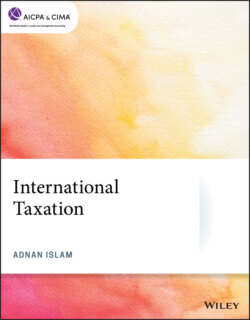Читать книгу International Taxation - Adnan Islam - Страница 80
Example 2-17
ОглавлениеAssume U.S. corporation D has a branch in country Z for which the functional currency is the country Z u. Country Z has experienced substantial inflation, and extraordinarily high interest rates reflect an expectation of continued inflation. D borrows 1000u from a country Z lender at 45% interest. If corporation D is allowed to calculate branch taxable income under the profit-and-loss method, D would be allowed to deduct annual interest expense of 450u translated at the average exchange rate for the year. Most of the interest is effectively compensation to the country Z lender for erosion of the lender’s principal through inflation. If cumulative inflation in the u is 40% during the year, the value of the principal falls by 40% during the year, and the interest cost in constant u’s is only 50u (450u nominal interest less 400u decrease in value of principal).
A change to DASTM required by the regulations is deemed made with IRS consent. If a QBU is required to use DASTM for any year, DASTM becomes a method of accounting that can be changed only with IRS consent, except that the QBU must return to the profit-and-loss method, using the currency of its economic environment as functional currency, once that currency has not been hyperinflationary for three successive years.
If a dollar election is made by a QBU whose functional currency is a hyperinflationary currency, the dollar will be the functional currency of the QBU. This method of accounting must be used to compute profits and losses. The translated amount of income and earnings and profits is a combination of operating profits plus exchange gains or losses for each taxable period. The computation is accomplished in a four-step procedure listed in the following material:
1 Prepare financial statements from the books regularly maintained by the QBU as recorded in the QBU’s hyperinflationary currency.
2 Adjust these statements to conform with U.S. generally accepted accounting and tax principles.
3 Translate the income statement accounts into U.S. dollars, and compute the profit in U.S. dollars.
4 Compute the foreign exchange gain or loss.
